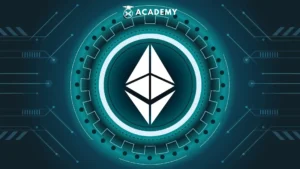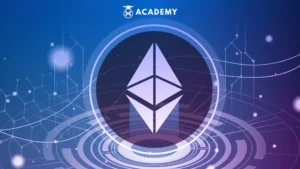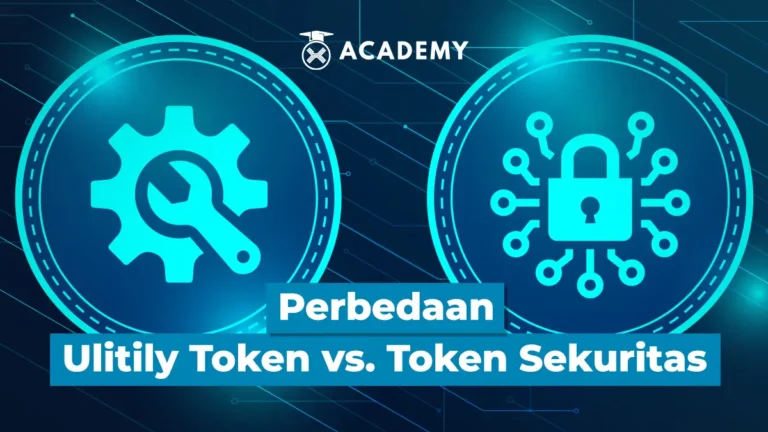In discussions about the world of crypto assets, the role of Ether (ETH) and blockchain platform, Ethereum is very important and needs to be understood. Ethereum is a decentralized computing platform that executes computer programs known as smart contracts.
It has a native crypto asset called Ether (ETH), which is the crypto asset with the second largest market capitalization after Bitcoin. However, Ether is a crypto asset and a “gas fee,” enabling various decentralized transactions and applications or Decentralized Applications (dApps) to operate within the Ethereum ecosystem.
As a blockchain platform, Ethereum is known to have created the foundation for major innovation in the crypto world. By understanding the differences and relationships between Ether and Ethereum, we can avoid any misunderstandings that may arise. This means that Ether is not just a digital coin but also a key element that drives the economy on the Ethereum blockchain.
So, to understand what Ether (ETH) is, its role in the Ethereum ecosystem, the relationship between the two, and the latest trends and future projections for Ether, see the complete review below!
What is Ether (ETH)?
It is important to know that the Ethereum blockchain is one of the oldest and most widely used blockchain networks. Ether, which functions as a gas fee, has become one of the leading cryptocurrencies after Bitcoin in terms of market value.
As explained at the beginning of this article, Ether is a native coin or native asset used in the Ethereum blockchain to facilitate transactions throughout its ecosystem. Every transaction in the Ethereum ecosystem requires payment of a computing fee (gas fee) to the miners who carry out the transaction computation. This payment is made using Ether.
These gas fees increase with the computational complexity required. For example, the shipping costs of ERC-20 tokens are higher than sending ETH because sending ERC-20 tokens uses interaction and computing on smart contracts while sending ETH does not involve such a process.
ETH has various uses as a digital asset and for carrying out various transactions in the Ethereum blockchain ecosystem. Please note that Ethereum has become one of the most widely used blockchain platforms for building dApps, along with its ability to support more programs than Bitcoin.
As a crypto asset, ETH has an important role as gas fees are paid to run computations on various applications developed on the Ethereum platform. This makes ETH one of the second largest crypto assets after Bitcoin when viewed from market value.
When it was first traded, the value of one Ethereum coin was around $2.83 or around IDR 41,035. However, in June 2021, the price of ETH jumped to $2,578 per coin, or the equivalent of IDR 36,822,218. ETH’s highest price peak occurred in November 2021, reaching $4,620. However, in December 2022, the price of Ethereum will decrease to $1,225 per coin, or the equivalent of IDR 19,264,748.
So, if you are interested in buying ETH, you can purchase through a trusted crypto buying and selling application, namely INDODAX. As a platform, INDODAX has been officially registered as a Physical Crypto Asset Trader under the Commodity Futures Trading Supervisory Agency (BAPPEBTI) so that security is guaranteed. You can download the INDODAX application to buy ETH.
The Role of Ether in the Ethereum Ecosystem

It is important to understand that Ether (ETH) is important in the Ethereum ecosystem and is used for various purposes on the network. One of Ether’s main roles in the Ethereum ecosystem is as a digital asset.
Initially, Ether was created as a digital asset for use on the Ethereum network. Most transactions and smart contracts are carried out using Ether. In this case, users can send and receive Ether within the Ethereum ecosystem.
Ether’s other main role is to pay transaction fees. Every time someone sends Ether or performs a function within a smart contract, they have to pay a transaction fee. These fees are known as “gas,” which is necessary to ensure that the Ethereum network runs efficiently and prevents network abuse.
The gas is a unit of measurement for measuring how much computing power is needed to complete a task on the Ethereum network. Smart contract transactions/execution require gas, and transaction fees are calculated based on the amount of gas used.
On the other hand, Ether also plays an important role in maintaining network security. Miners who process transactions and secure the network will receive rewards in the form of Ether for their efforts. This also provides incentives for miners to maintain network reliability and security.
Apart from that, Ether is also used as a store of value in the network’s decision-making process to create tokens and to run smart contracts on the Ethereum network. For example, ERC-20 and ERC-721 tokens are often created using Ether as “gas” to carry out smart contracts.
Ethereum Ecosystem: Beyond Ether
As previously explained, smart contract technology on Ethereum drives new innovations in financial transactions. The following are several examples of smart contract implementation that are currently underway including:
1. Stablecoins
Crypto asset prices are often very volatile. Stablecoins , which utilizes smart contract technology, also solves this problem. The value of stablecoins is held to the value of non-digital assets, such as the rupiah and US dollar, to maintain their stability.
Some well-known stablecoins maintain stability by guaranteeing a 1:1 rate with the original currency and being convertible to that currency. For example, Rupiah Token (IDRT), a crypto asset on the Ethereum blockchain, has a value equivalent to the rupiah. IDRT creates a digital representation of rupiah by generating tokens in proportion to the amount of rupiah deposited by the user and sending them to the user’s Ethereum wallet.
Apart from IDRT, another example of a stablecoin, namely USD Coin (USDC), is designed to have the same value as the US dollar. The existence of stablecoins makes it easier for users to transfer value to various places around the world in a short time. Stablecoins also provide the stability needed in the crypto ecosystem and connect traditional financial infrastructure with the blockchain world.
2. Borrow and Borrow on Ethereum
Smart contract technology on the Ethereum blockchain also enables the development of crypto asset lending and lending applications. For example, AAVE and Compound are decentralized lending and lending Apps (dApps) based in the Ethereum ecosystem.
With AAVE and Compound, users can deposit crypto assets to earn interest or borrow other crypto assets. Using these two applications requires an Ethereum wallet and a certain amount of funds in the form of ETH or ERC-20 tokens. With AAVE and Compound, anyone can be involved in asset lending and lending activities without relying on banks or traditional financial institutions.
3. Decentralized Exchanges (DEXs)
Decentralized Exchanges (DEXs) are applications that facilitate token exchange using smart contract technology. One example of a very popular DEX built on Ethereum is Uniswap and Sushiswap.
Through DEXs, users can exchange ETH for ERC-20 tokens or vice versa and exchange between ERC-20 tokens. As long as it follows the ERC-20 token standard, various types of tokens can be exchanged using DEXs.
The Connection Between the Two
Ether (ETH) and Ethereum are interrelated concepts, but they have different roles in the Ethereum blockchain ecosystem. Ethereum is a blockchain platform allowing developers to create and run dApps. On the other hand, Ether is a crypto asset used on the Ethereum network.
Remember that Ethereum is designed to support smart contracts, programming codes that can execute certain tasks when specified conditions are met. Ether is used as “gas” to carry out these operations, including executing smart contracts.
On the other hand, Ether is also used as an incentive for miners (or validators in the context of Ethereum 2.0), which helps keep the network decentralized and secure. Miners will receive Ether in exchange for adding blocks to the blockchain.
Ether is also used as a digital asset to carry out transactions within the Ethereum network. Every time someone sends Ether, it automatically reflects a transfer of value within the Ethereum ecosystem. Meanwhile, when someone runs or interacts with smart contracts, he must pay transaction fees in the form of Ether. This helps prevent network abuse and ensures that people who use network resources pay for that use.
Ethereum and Ether complement each other. Ether itself is essential to maintaining the functionality of the Ethereum network. Without Ether, executing transactions, implementing smart contracts, or ensuring network security would be impossible. The existence of Ether itself supports the Ethereum ecosystem by providing incentives for developers to create decentralized applications and for miners (validators) to keep the network safe and decentralized.
History and Evolution

The history of Ether and Ethereum is known to have reflected a long journey towards the development of blockchain technology and the growth of the crypto ecosystem as a whole. Referring to its history, Ethereum was first proposed by Vitalik Buterin in 2013. It was an evolution of the idea to expand Bitcoin’s functionality by enabling smart contracts.
The funding for Ethereum development was obtained through an initial public offering (ICO) in 2014, where Ether (ETH) was first sold to investors. Furthermore, Ethereum was launched on July 30, 2015, with the launch of the first block, or “Genesis Block.”
As time passes, Ethereum 2.0 aims to move away from consensus Proof-of-Work (PoW) to Proof-of-Stake (PoS), which began to be developed to increase network scalability and efficiency. The first phases of Ethereum 2.0 are launched, and the transition towards PoS begins.
Furthermore, the launch of Ethereum as a new blockchain platform and raising funds through ICOs is known to have played an important role in forming the modern crypto ecosystem. One of the important events that shaped their role in the crypto industry was when an attack occurred on Decentralized Autonomous Organization(DAO). In 2016, an attack on the DAO on Ethereum led to a massive theft of Ether.
To overcome the consequences of the DAO attack, the Ethereum community decided to carry out a hard fork, then created Ethereum (ETH) and Ethereum Classic (ETC) as two separate blockchain chains. Ultimately, efforts to improve network performance and security through Ethereum 2.0 and the transition to PoS are important steps in Ethereum’s evolution.
The Importance of Maintaining Both
It should be emphasized that Ether is the driving force in the Ethereum ecosystem. By maintaining its sustainability, Ether continues to support the execution of transactions and smart contracts on the network. This is important for maintaining blockchain functionality and allowing various decentralized applications to run. Apart from that, Ether also plays an important role in maintaining the resilience of the Ethereum network. Through incentives for miners (or validators in Ethereum 2.0), Ether ensures that the network remains secure, distributed, and resistant to attacks.
Furthermore, Ethereum powered by Ether also plays a key role in driving innovation in Decentralized Finance(DeFi). Ether’s sustainability supports liquidity, collateral, and smart contract functionality that is the foundation for various DeFi projects, from loans to exchanges to other protocols.
Ethereum, which can run smart contracts, is known to have paved the way for various use cases, including finance, logistics, digital identity, and many others. Therefore, maintaining Ether is key to ensuring that innovation continues to develop in various sectors. On the other hand, Ethereum has also become the main platform for DeFi projects. The growth of DeFi is also one of the main factors driving wider crypto adoption, as it provides a decentralized alternative to traditional financial services.
Therefore, it can be concluded that Ether and Ethereum play an important role in forming and maintaining the crypto ecosystem. Ether’s sustainability supports transactions, network security, and innovation within Ethereum, while Ethereum, as a platform, continues to drive the growth and broader adoption of blockchain technology. Both are interdependent and play an important role in driving the evolution of the global crypto ecosystem.
Recent Trends and Future Projections
The latest trends in Ether and Ethereum can be seen from the development of Ethereum 2.0 and PoS. Development of Ethereum 2.0 itself continues, with a focus on implementing PoS to increase network efficiency and sustainability. Additionally, the DeFi sector continues to be a major trend within the Ethereum ecosystem, with the growth of projects such as lending protocols, decentralized exchanges, and liquidity mining.
Then, there are also Layer-2 scalability solutions, such as Optimistic Rollups and zk-Rollups, which gained popularity to address Ethereum’s scalability challenges, enabling faster transactions and lower fees. Meanwhile, regarding future projections for Ether and Ethereum, with the continued development of Ethereum 2.0, future projections involve a swap from PoW to PoS, which is expected to increase network speed and efficiency.
On the other hand, the DeFi sector is also expected to continue to develop with more innovations, such as introducing more complex financial products, growing lending and borrowing protocols, and cross-chain solutions to increase interoperability. Ultimately, if Ethereum 2.0 successfully addresses scalability and transaction cost issues, then Ethereum will have the potential to play a role in revitalizing the global financial system, opening the door to greater financial inclusion and decentralized financial solutions.
Integrating blockchain and smart contracts on Ethereum could also bring major benefits to various industries, from supply chains to insurance, with the potential to reduce bureaucracy and increase efficiency.
Buy Ethereum on INDODAX
So, now you understand what Ether (ETH) is, its role in the Ethereum ecosystem, the relationship between the two, and the latest trends and future projections for Ether.
Next, if you want to buy Ethereum (ETH), you can do it at INDODAX. The following is a guide to buying Ethereum on INDODAX that you need to know:
- First, log in to your INDODAX account.
- Then, make a deposit (if the balance is still empty).
- Continue by visiting the INDODAX market, then search for Ethereum on the INDODAX market.
- Next, look for the trade column and enter the desired Ethereum price and balance amount. You can use the Instant method or the Limit method.
- Alternatively, you can immediately place a sell order at the price you determine after you have Ethereum. Make sure that the price is profitable.
Conclusion
In conclusion, Ether functions as a digital asset within the Ethereum network, allowing transactions and payment of network operational fees (gas). In addition, Ether also provides incentives for miners (or validators) to keep the network secure via PoW or PoS.
Meanwhile, Ethereum provides a platform for running smart contracts that allow the creation and execution of programming code without third-party intermediation. Ethereum is the basis for a growing DeFi ecosystem and various dApps that create decentralized alternatives to traditional financial services.
Understanding Ether and Ethereum is important to understand the functionality and usability of the crypto ecosystem. A deep understanding of Ether and Ethereum is necessary to participate effectively in the crypto ecosystem and recognize the transformational potential they can bring to various sectors and industries in the future.








